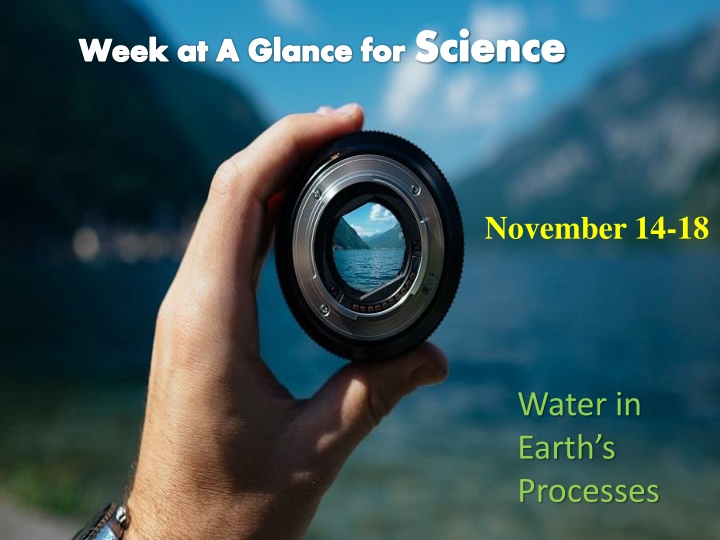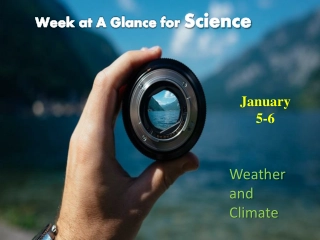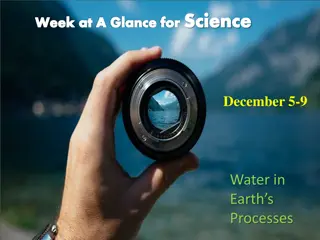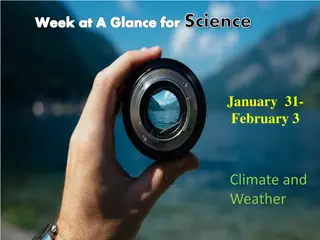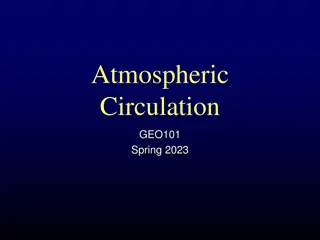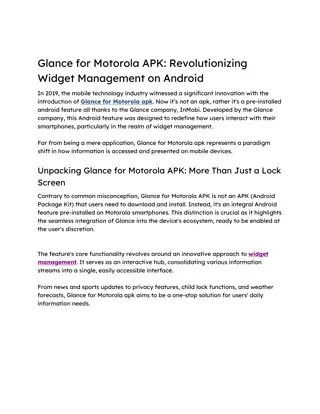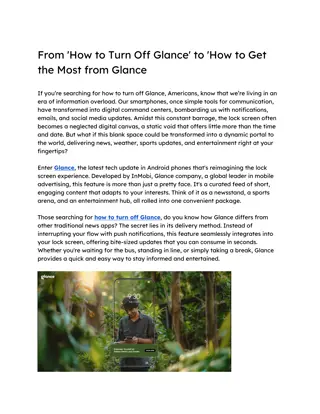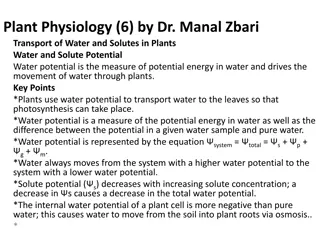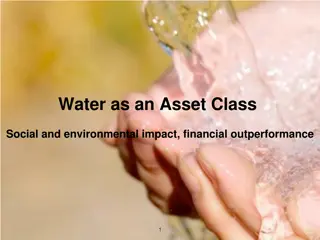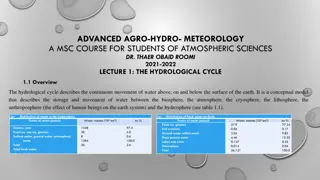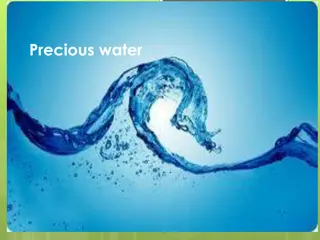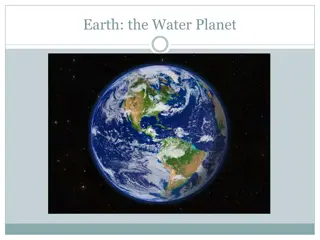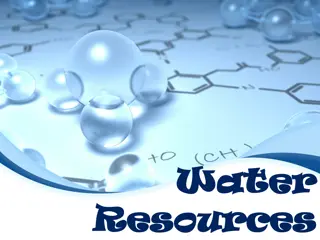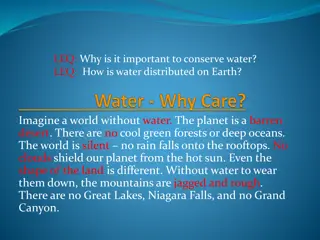Week at a Glance: Science - Water in Earth's Processes
Composition and topography of the world's oceans, analyzing wave and tide effects, investigating the sun's role in the water cycle, and more. Dive into a comprehensive science agenda for November 14-18 with engaging activities, homework tasks, and educational resources.
Download Presentation

Please find below an Image/Link to download the presentation.
The content on the website is provided AS IS for your information and personal use only. It may not be sold, licensed, or shared on other websites without obtaining consent from the author.If you encounter any issues during the download, it is possible that the publisher has removed the file from their server.
You are allowed to download the files provided on this website for personal or commercial use, subject to the condition that they are used lawfully. All files are the property of their respective owners.
The content on the website is provided AS IS for your information and personal use only. It may not be sold, licensed, or shared on other websites without obtaining consent from the author.
E N D
Presentation Transcript
Week at A Glance for Science November 14-18 Water in Earth s Processes
November 14 -18 c. Ask questions to identify and communicate, using graphs and maps, the composition, location, and subsurface topography of the world s oceans.
the arrangement of the natural and artificial physical features of an area.
Ocean Floor Video Click link
d. Analyze and interpret data to create graphic representations of the causes and effects of waves, currents, and tides in Earth s systems.
b. Plan and carry out an investigation to illustrate the role of the sun s energy in atmospheric conditions that lead to the cycling of water. (Clarification statement: The water cycle should include evaporation, condensation, precipitation, transpiration, infiltration, groundwater, and runoff.)
Homework for Science Monday: 2 square draw ocean floor in square #2 Ch. 15 WB p. 465-467 Tuesday: 2 square draw ocean floor in square #4 Ch. 15 WB p. 468-470 Wednesday: New 2 square draw rock cycle in square #2 water cycle #3, earth s layers #4 Water on Earth Powerpoint Thursday: Organize Science Binder and Homework Folder Weathering/Erosion Powerpoint
Click for Link to Website https://www.thinglink.com/scene/986989732015636481
5 2 6 1. Water 2. Sun 3. Heat 4. Evaporation 5. Condensation 6. Precipitation 7. Transpiration 8. Run off 3 7 4 8 1
5 2 6 3 7 4 8 1
Video Link: Water Cycle
96.5 % Oceans, seas, bays 1.74% Ice caps, Glaciers 1.69% Ground water .022% Permafrost .013 % Lakes .002% Rivers .001% Soil .001% Atmosphere/ water vapor .0008% Swamps .0001% Biological / living organisms
Video Link
Video Link
Monday, November 14 Standard: c. Ask questions to identify and communicate, using graphs and maps, the composition, location, and subsurface topography of the world s oceans. Learning Target: I can identify the subsurface topography of the world s oceans. Warm-up: Chapter 15 Workbook Packet Work Session: Oceans and the topography of the ocean floor. Video. Trace Map of Ocean Floor. Students will make PowerPoint Study Guide. Closing: TOD Reminders: Retakes and Missing Work
Tuesday, November 15 Standard: c. Ask questions to identify and communicate, using graphs and maps, the composition, location, and subsurface topography of the world s oceans. Learning Target: I can identify the subsurface topography of the world s oceans. Warm-up: Chapter 15 Workbook Packet Work Session: Oceans and the topography of the ocean floor. Video. Trace Map of Ocean Floor. Students will make PowerPoint Study Guide. Closing: TOD Reminders: Retakes and Missing Work
Wednesday, November 16 Standard: c. Ask questions to identify and communicate, using graphs and maps, the composition, location, and subsurface topography of the world s oceans. Learning Target: I can identify the subsurface topography of the world s oceans. Warm-up: Chapter 15 Workbook Packet Work Session: Oceans and the topography of the ocean floor. Video. Trace Map of Ocean Floor. Students will make PowerPoint Study Guide. Closing: TOD Reminders: Retakes and Missing Work
Thursday, November 17 Standard: c. Ask questions to identify and communicate, using graphs and maps, the composition, location, and subsurface topography of the world s oceans. Learning Target: I can identify the subsurface topography of the world s oceans. Warm-up: Chapter 15 Workbook Packet Work Session: Oceans and the topography of the ocean floor. Video. Trace Map of Ocean Floor. Students will make PowerPoint Study Guide. Closing: TOD Reminders: Retakes and Missing Work
Monday, November 18 Standard: Learning Target: GRIT Day. Students will work on any missing assignments, retakes for certain assessments/assignments. Warm-up: Work Session: Closing: Reminders:
Students will have 15 minutes of Homework each evening. 4 Squares (usually a drawing) Rock Cycle Puzzle Chapter 1 or 3 Workbook Pages Powerpoint Study Guide Study Notes or Study Guides Watch Video from Week at a Glance
Resources https://oceantoday.noaa.gov/watercycle/ https://www.geographyrealm.com/water-earth/ https://www.youtube.com/watch?v=QcteL7-0-74
S6E3. Obtain, evaluate, and communicate information to recognize the significant role of water in Earth processes. a. Ask questions to determine where water is located on Earth s surface (oceans, rivers, lakes, swamps, groundwater, aquifers, and ice) and communicate the relative proportion of water at each location. b. Plan and carry out an investigation to illustrate the role of the sun s energy in atmospheric conditions that lead to the cycling of water. (Clarification statement: The water cycle should include evaporation, condensation, precipitation, transpiration, infiltration, groundwater, and runoff.) c. Ask questions to identify and communicate, using graphs and maps, the composition, location, and subsurface topography of the world s oceans. d. Analyze and interpret data to create graphic representations of the causes and effects of waves, currents, and tides in Earth s systems.
